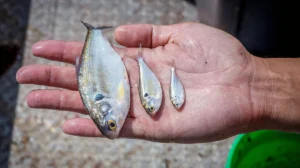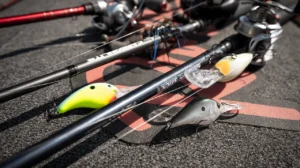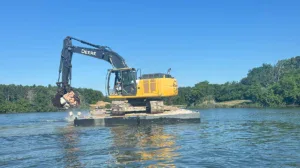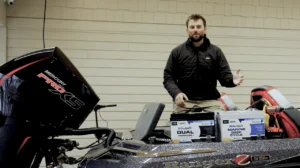Wired2Fish’s Nick Dumke heads out to a local lake to explore the technique of flipping weedlines for largemouth bass. Starting the day fishing docks, it quickly becomes apparent that the shallow waters are unproductive, with empty bluegill and few signs of life. Adjusting his strategy, Dumke turns to deeper waters and starts flipping around the weed edges, where bites start to pick up quick.
Featured Product
- PLASTIC – Yamamoto Flappin’ Hog: Buy at Tackle Warehouse | Buy at FishUSA | Buy at Bass Pro Shops
- HOOK – VMC Redline HD Flipping Hook 3/0: Buy at Tackle Warehouse | Buy at FishUSA | Buy at Bass Pro Shops
- WEIGHT – VMC Tungsten Flipping Weight 1/4 oz.: Buy at Tackle Warehouse | Buy at FishUSA
- ROD – Okuma Psycho Stick Casting Rod 7’2″ Medium: Buy at Tackle Warehouse
- REEL – Okuma Hakai Baitcasting Reel 7:3: Buy at Tackle Warehouse
- LINE – Seaguar Red Label 17lb. Fluorocarbon: Buy at Tackle Warehouse | Buy at FishUSA | Buy at Bass Pro Shops
- HOODY – Aftco Reaper Hooded Sweatshirt: Buy at Tackle Warehouse | Buy at FishUSA | Buy at Bass Pro Shops
Covering Water to Breakdown the Bite
Dumke emphasizes the importance of covering as much water as possible while flipping weedlines. By staying mobile and focusing on key vegetation areas with hard bottom, the odds of running into eager fish are much higher. Using side imaging and LakeMaster mapping can help locate high-percentage areas that bass will relate to. He also points out the importance of weed types, whether it’s curly pond weed or other vegetation, since bass often relate to specific kinds of grass.
Flipping Setup and Technique
Dumke shares his flipping setup, using a 7’2″ medium rod paired with a high-speed reel for quick line retrieval. He opts for 17lb. fluorocarbon line, which provides the perfect balance of sensitivity and strength. As he demonstrates, the key to success is quick, precise flips, dropping the bait in front of eager bass that are holding tight in the grass. A texas-rig with a compact creature bait paired with a smaller flipping hook gives bass a presentation that drives them nuts and gets a lot of bites.
Boat Setup
- OUTBOARD – Mercury Pro XS 200hp: Check out at Mercury
- TROLLING MOTOR – Minn Kota Ultrex QUEST, 112lb, 36V, 52″: Buy at Bass Pro Shops | Buy at Tackle Warehouse
- FISH FINDER (Console and Bow) – Humminbird XPLORE 12 CMSI+: Buy at Bass Pro Shops | Buy at Tackle Warehouse | Buy at FishUSA
- FISH FINDER (Console and Bow) – Humminbird APEX CHIRP MEGA SI+ GPS G4N: Buy at Tackle Warehouse | Buy at FishUSA
- FORWARD-FACING SONAR (FFS) – Humminbird MEGA Live 2: Buy at Bass Pro Shop | Buy at FishUSA
- SHALLOW WATER ANCHORS – Minn Kota Talons: Buy at Bass Pro Shops | Buy at FishUSA | Buy at Tackle Warehouse


![[VIDEO] Crankbait Tweaks That Catch More Fish](https://www.wired2fish.com/wp-content/uploads/2025/11/cooper-website-300x169.webp)
![[VIDEO] How to Store Lithium Batteries for Winter](https://www.wired2fish.com/wp-content/uploads/2025/11/millertech-website-300x169.webp)
![[VIDEO] Cody Huff’s Night Fishing Secrets for Big Bass](https://www.wired2fish.com/wp-content/uploads/2025/11/huff-website-1-300x169.webp)
![[VIDEO] Seth Feider’s Tips for River Topwater Fishing](https://www.wired2fish.com/wp-content/uploads/2025/11/feider-website-300x169.webp)








